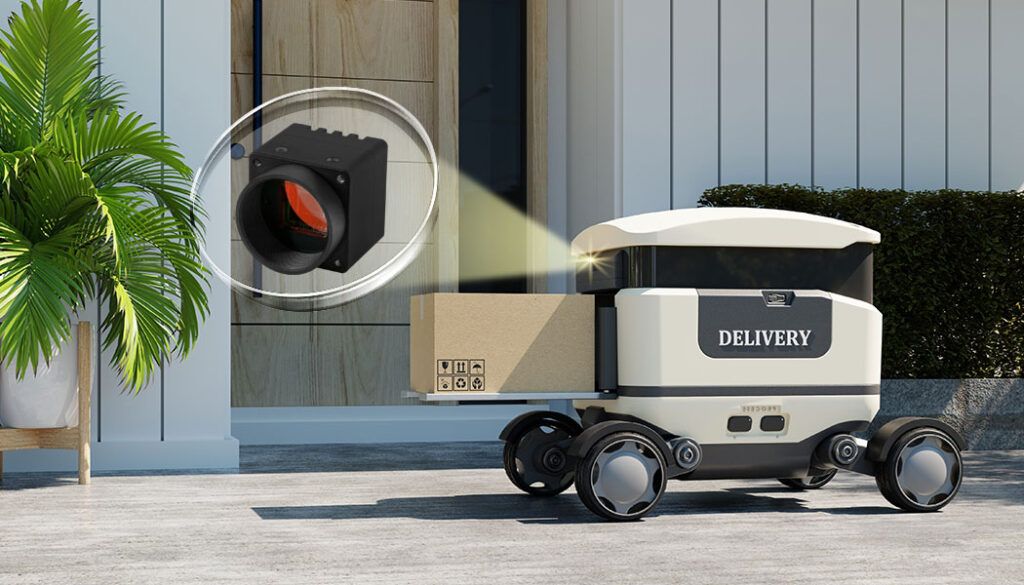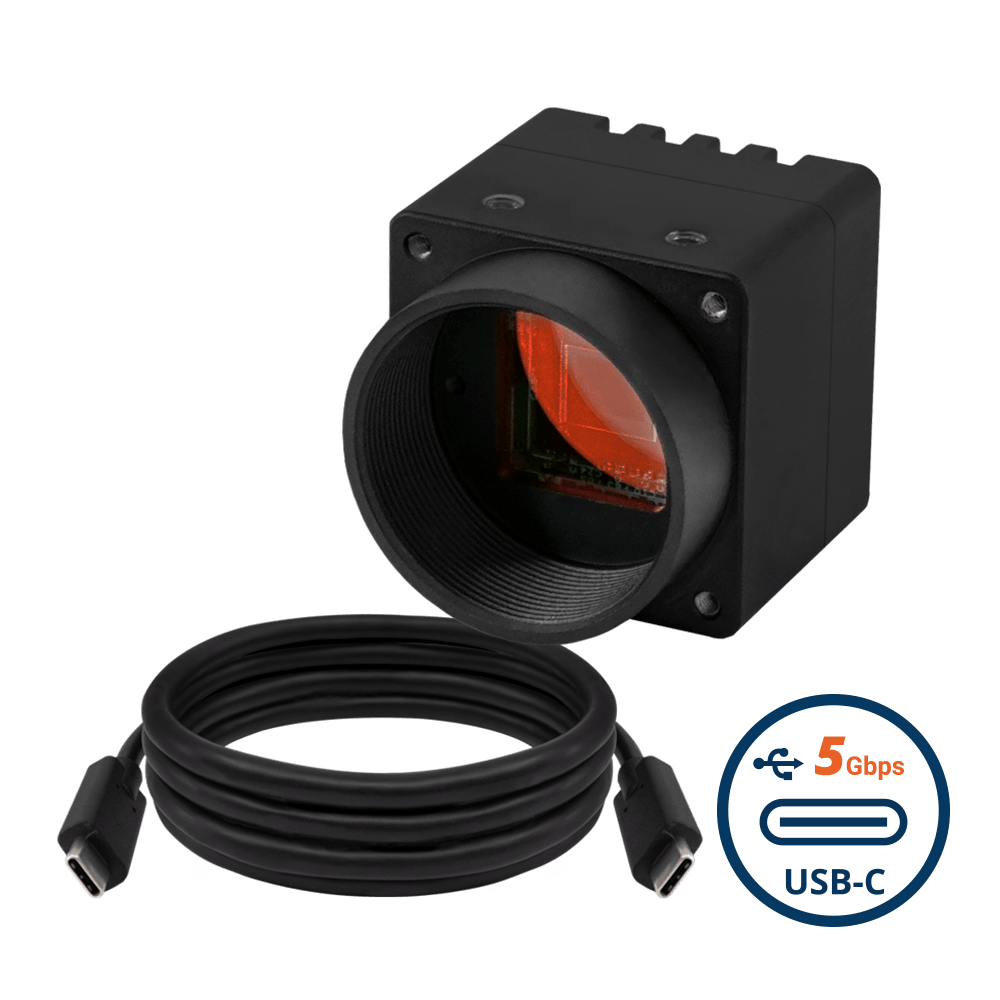Traditional delivery methods face various challenges, such as delays, security breaches, and high labor costs today. These issues impact the efficiency of logistics and customer satisfaction. Late or lost deliveries frustrate customers, while businesses incur higher operational expenses and decreased reliability. With the rising demand for quick and secure delivery options, the traditional method struggles to keep up.
Delivery robots have proved to be a game-changer in this regard. Integrating embedded cameras in delivery robots offers real-time tracking and enhanced security through visual monitoring.
With autonomous navigation, the risk of errors and delays is also significantly reduced. This technological advancement solves immediate logistical challenges and sets the foundation for a more efficient, secure, and cost-effective future in delivery services.
In this blog post, we will cover how delivery robots are transforming last-mile delivery, and the role embedded vision cameras play in the revolution.
What are delivery robots?
Delivery robots are advanced machines that use artificial intelligence and a variety of sensors to transport goods without the need for human intervention. They are part of the growing field of robotics and automation and are being utilized in various industries due to their efficiency and cost-effectiveness. These automated devices can easily navigate different environments, from indoor facilities like warehouses and hospitals to outdoor spaces such as streets and campuses.

A delivery robot
Functionalities of delivery robots
Delivery robots have several key functions. The use of GPS, cameras, LiDAR, and other sensors allow these robots to navigate autonomously through their surroundings. Additionally, they are equipped with obstacle avoidance sensors to ensure safe and efficient delivery. These robots can handle various payloads and often have secure compartments to protect the goods during transit. They can also communicate with customers, central control systems, and other robots through wireless networks. Most delivery robots are battery-operated and have systems for energy conservation and self-charging.
Delivery robots perform various tasks such as:
- Last-mile delivery for e-commerce and postal services.
- Food and meal delivery for restaurants and food delivery services.
- Transportation of medical supplies in healthcare settings.
- Movement of goods within warehouses for inventory management and order fulfillment.
- Sanitization and cleaning of public spaces during health crises.
How do delivery robots enhance last-mile delivery?
- Cost savings through automation: By automating the delivery process, robots reduce the reliance on human couriers, thereby decreasing labor costs. Additionally, they can work continuously without fatigue, potentially reducing delivery costs.
- Faster and more efficient deliveries: The ability of robots to operate 24/7 increases the total number of deliveries that can be completed in a day.
- Enhanced accessibility: Robots can deliver to areas where traditional vehicles may struggle, such as pedestrian zones or densely populated urban areas. They also provide convenience by enabling deliveries at times that may be impractical for human couriers, such as late at night.
- Precision delivery for improved customer experience: Utilizing GPS and real-time tracking, deliveries can be made with greater accuracy, enhancing customer convenience.
- Minimized human error: Automated processes help to reduce the occurrence of mistakes such as incorrect deliveries.
- Eco-friendly transportation: Electrically powered delivery robots contribute to lower carbon emissions when compared to conventional gasoline or diesel vehicles.
- Enhanced energy efficiency: Particularly beneficial for short distances, these robots are generally more energy efficient.
- Adaptable operations: The delivery fleet can be adjusted according to demand without being limited by the availability of human workers.
- Intelligent Routing: Robots can learn and optimize their delivery routes over time with the help of cameras, AI, and machine learning.
- Safety measures: Advanced sensors and reduced speeds contribute to a decrease in accidents compared to traditional vehicles.
- Contactless delivery options: This is particularly valuable during a pandemic, where minimizing human contact is essential.
Role of embedded cameras in delivery robots
Navigation
One important aspect of robotics is navigation, which often requires depth perception. 3D depth cameras like stereo, time-of-flight, or structured light cameras, play a crucial role in depth sensing. These cameras can also be combined with SLAM (Simultaneous Localization and Mapping) to help the robot understand its location in space, and to plan its route intelligently. Additionally, these cameras enable the robot to interact with its environment and adjust its path accordingly.
Obstacle detection
Embedded cameras in a robot are designed to detect obstacles and prevent accidents by identifying potential collisions. This technology ensures the safety of pedestrians and other vehicles by enabling the robot to take extra precautions when encountering animate or inanimate objects.
Surround-view
The robot can utilize multiple integrated cameras to capture a full 360-degree view of its surroundings, providing real-time monitoring or recorded footage for later analysis. The comprehensive imagery collected is essential for enhancing the robot’s navigational algorithms and understanding the environment.
Package tracking
Embedded cameras, when oriented internally, can track and monitor packages loaded into its delivery compartment. Thus, during delivery, it can detect when a package is loaded into or removed from the robot to ensure accurate delivery and pickup.

Multi-camera systems in delivery robots
Multi-camera systems in delivery robots enable advanced autonomous navigation and ensure operational efficiency and safety. They offer the following advantages:
- Enhanced field of view for autonomous navigation: Strategically placing multiple cameras around the robot gives it a comprehensive visual perspective in all directions, allowing the robot to make informed decisions and navigate complex environments more effectively.
- Real-time data alignment for accurate perception: Synchronizing the cameras is essential for precise real-time navigation, reducing delays and errors by aligning visual data from each camera enhancing the robot’s ability to process and react to environmental changes smoothly.
- Real-time obstacle detection and identification: The robot’s synchronized multi-camera system enables rapid detection and identification of obstacles, including stationary objects and moving pedestrians, which allows the robot to swiftly adjust its trajectory to ensure efficient and safe navigation toward its destination.
- Comprehensive environmental mapping: As the robot moves, its cameras continuously capture data to create a dynamic 360-degree map of the environment.
- Increased autonomy and improved situational awareness: Multiple viewpoints provide the robot with a better understanding of its surroundings, reducing the risk of collisions and enhancing safety.
- Decreased human involvement: With reliable autonomous navigation, there is less need for human monitoring or intervention, resulting in a more streamlined and efficient delivery process.
Are global shutter cameras a must in delivery robots?
The need for global shutter cameras is often a topic of debate in the robotic vision world. Not all delivery robots require global shutter cameras, but they can be highly advantageous in certain situations, in favor of preventing rolling shutter artifacts.
At the same time, moderate-speed operations or less dynamic environments can make do with high frame rate rolling shutter cameras. Considering the cost versus the benefit of global shutter cameras is important, as they are more expensive and should only be used if justified by the robot’s operational requirements.

FPD-Link III Aluminium Enclosed Camera with onsemi AR0144 1MP Global Shutter with Onboard ISP + S-mount Lens with IR-Cut Filter
VLS-FPD3-AR0144-SL
- onsemi AR0144 1MP Global Shutter Sensor
- Captures high-speed dynamic targets clearly within an ultra-short exposure time
- S-Mount for Interchangeable Lenses
- FAKRA Z-Code Automotive Connector
- Plug & Play with Linux OS & Yocto
- VizionViewer™ configuration utility
- VizionSDK for custom development

FPD-Link III Aluminium Enclosed Camera with onsemi AR0234 2MP Full-HD Global Shutter with Onboard ISP + IR-Cut Filter with C Mount Body
VLS-FPD3-AR0234-CB
- onsemi AR0234 2.3MP Global Shutter Sensor
- C-Mount for Interchangeable Lenses
- FAKRA Z-Code Automotive Connector
- Plug & Play with Linux OS & Yocto
- VizionViewer™ configuration utility
- VizionSDK for custom development
The future of delivery robots and the role of embedded vision in it
Delivery robots will heavily rely on embedded cameras for enhanced navigation, safety, and interaction with their surroundings. These systems will enable precise navigation, obstacle avoidance, and safe interaction with pedestrians and vehicles. Additionally, they will process vast amounts of visual data in real time, leading to quicker and more accurate decision-making.
Integrating advanced image processing and AI algorithms will greatly improve object recognition, allowing robots to better differentiate objects and people in dynamic urban environments. Multi-camera systems will provide comprehensive environmental awareness for complex navigation and safety while integrating with other technologies such as LiDAR, radar, and ultrasonic sensors to create more robust navigation systems.
TechNexion – cameras for modern delivery robots
TechNexion offers a variety of cameras, including FPD-Link III cameras and USB cameras, designed to meet the evolving demands of modern delivery robots. These state-of-the-art camera systems enable enhanced navigation, object recognition, and interaction with the environment for more autonomous, efficient, and versatile delivery robots in any setting.
Some of the key features of TechNexion’s cameras that make them suitable for delivery robots are:
- Long-distance transmission – up to 15m.
- Rolling shutter and global shutter variants.
- Low light sensitivity.
- NIR enhancement for imaging at night.
- High dynamic range for capturing images in extreme lighting conditions.
- S mount and C mount lens mounts – enabling customers to pick the lens of their choice.
To learn more about our embedded vision solutions, please visit this page.
Related Products
- What are delivery robots?
- Functionalities of delivery robots
- How do delivery robots enhance last-mile delivery?
- Role of embedded cameras in delivery robots
- Multi-camera systems in delivery robots
- Are global shutter cameras a must in delivery robots?
- The future of delivery robots and the role of embedded vision in it
- TechNexion â cameras for modern delivery robots
- Related Products



